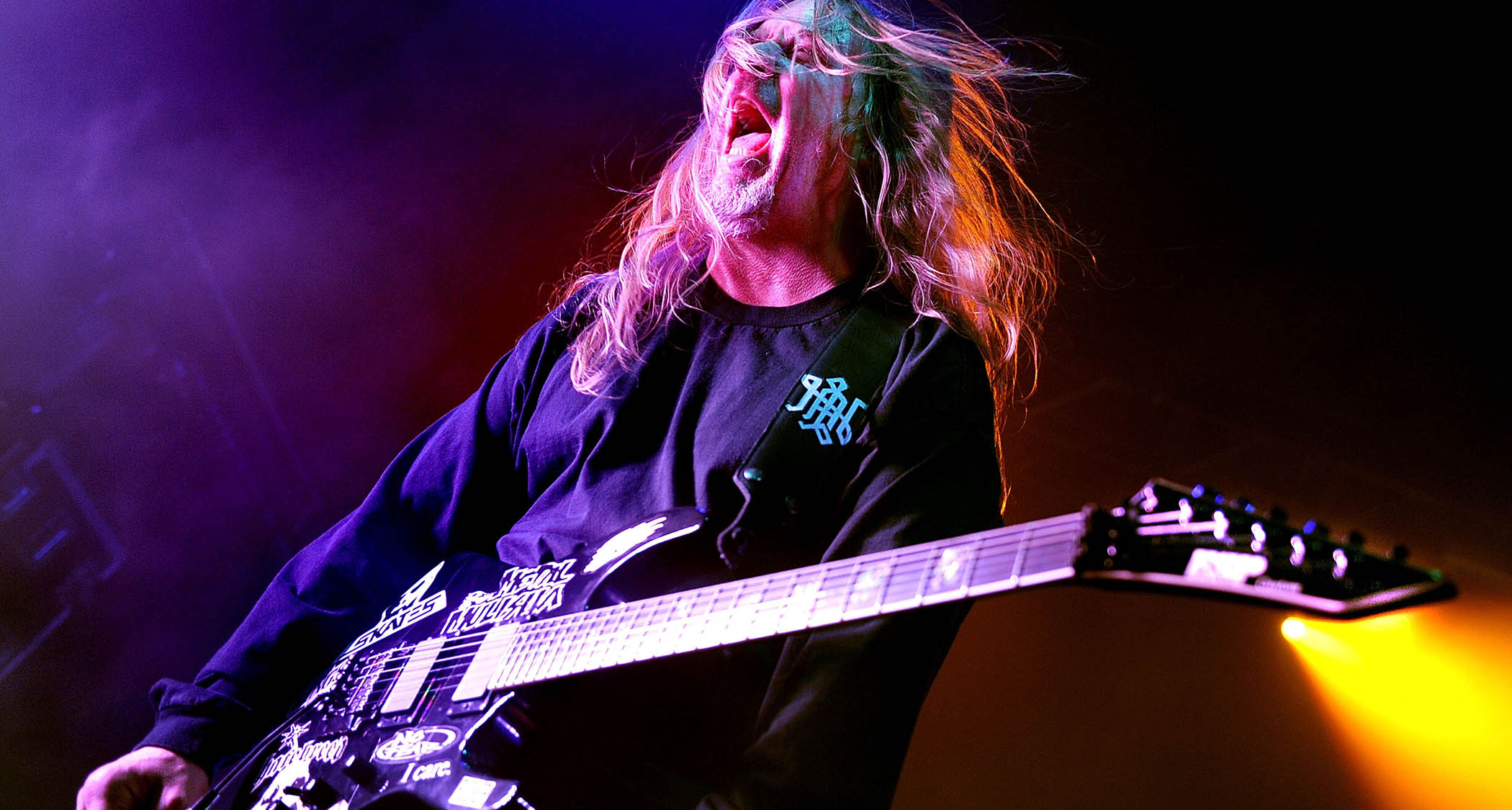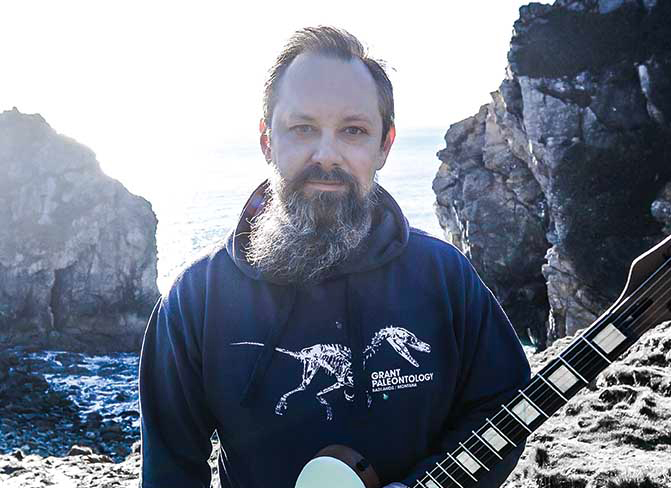Jeff Hanneman is a metal god whose evil phrasing and brutal downpicking gave thrash kings Slayer an unholy dimension
Hell awaits your forearm in this punishing lesson in the late Hanneman's style, but it will soon whip your downpicking and tapping skills into shape

Born in Long Beach California in 1964, Jeff Hanneman was a founding member of metal band Slayer in 1981. Sadly Jeff passed away in 2013 aged just 49, but his name lives on as a pioneering guitarist of one of the big four thrash bands.
Jeff’s unique riffing and soloing style featured on 12 studio releases including classic albums such as Hell Awaits, Reign In Blood and Seasons In The Abyss to name a few. In this lesson, we will look at some riffing and soloing approaches that stem from both punk and metal genres, but are also unconventional and share certain similarities with modern classical music.
Our first example uses a fast flurry of chromatic notes to create the effect of organised chaos. Mathematically, this is a repeating five-note legato pattern phrased within septuplets, but it may be easier to think of it as four even downstrokes played across three downbeats, with the three-finger legato finger pattern squeezed evenly in between.
The riff is harmonised in perfect 5ths on the backing track, so listen intently to the accompanying guitar in order to match the phrasing.
Riff number two is another chromatic idea, this time using interval skips within one octave. The concept here is an Arnold Schoenberg-style series of 12 notes, with no repetitions until all the notes have been played (Serialism).
This angular style is emphasised by the aggressive attack of consistent palm-muted downpicking. This style of picking is notoriously tough on the forearm, but with daily practice your accuracy and stamina will become stronger and stronger.
Example 3 ventures into lead territory with a lick in E Locrian (1-b2-b3-4-b5-b6-b7). The Locrian mode is rarely used but its diminished, unresolved quality makes it perfect for Slayer solos which are often more akin to free jazz self-expression than more typical metal solos rooted in blues tradition.
All the latest guitar news, interviews, lessons, reviews, deals and more, direct to your inbox!
Next is a tapping idea using E diminished half-whole scale (E-F-G-G#-A#-B-C#-D), which is a symmetrical pattern of alternating tones and semitones that works well over the static riffs often used by Slayer. Use the open second string and 9th fret as book-ends and move your fretting hand up and down the scale in between.
Example 5 uses the familiar minor pentatonic shape 1 to create an unsettlingly evil Locrian sound. To achieve this we superimpose the scale over a different root note. Rather than starting the shape with the first note on the root, move it down two frets and start on the b7 of the key. So although the shape may be familiar, in reality the intervals are (b2-b3-4-b6-b7).
Following this is the type of alternate picked run that Jeff played with intensity and power. Jeff’s aggressive sound is achieved by digging the pick into the strings for a heavy, loud attack and, although it may feel counter-intuitive, to maintain this level throughout a whole song we need to maintain a relaxed technique.
Play each example slowly to begin with, focusing on accuracy, timing and economy of motion before gradually increasing the tempo until you’re comfortable at speed.
Get the tone
Amp Settings: Gain 7, Bass 2, Middle 6, Treble 7, Reverb 0
Throughout his career, Jeff used BC Rich, Jackson and for the most part ESP guitars. For riffing, the EMG 81 bridge humbucker pickup provides the tight, powerful punch and the EMG 85 neck pickup provided a warmer sound for melodic parts. Amp-wise Jeff used the classic Marshall JCM800. Go for a tight, gainy, bridge pickup tone and either very little or no reverb.
Example 1
Use first, second and third fingers to hammer-on and pull-off the opening five-note phrase and shift it up and down the fretboard while picking the initial notes. On beat 4 use palm-muted downstrokes to play the open E root note. In bar 2, move the legato phrase up a 5th interval.
Example 2
Palm-mute the open sixth string and pick down-up-down in a reverse galloping rhythm. Next, use all four fretting fingers to play the chromatic, interval skipping phrase and use tight downstrokes to pick each note with a consistent attack. Although the melodic phrase in bar 2 is different, the technique remains the same.
Example 3
Start with a downstroke and use alternate picking throughout. In bar 1 the second string always starts with a downstroke and the first string with an upstroke.
In bar 2 each downbeat starts on a downstroke. Finish with a tone bend at the 20th fret, then catch the second string which is bent up a semitone.
Example 4
Tap the 9th fret with the second finger of your picking hand (m) and use first, second and third fingers to ascend the second string in a series of alternating tones and semitones, also using the open string to complete the six-note phrasing. Focus on tapping on the downbeat in order to stay in time more accurately.
Example 5
Use hammer-ons and pull-offs to ascend the opening D minor pentatonic shape, then play three-notes-per-string within E Locrian mode to ascend and descend the strings before finishing with a natural harmonic. As you play the harmonic, scoop the bar then add a wide whammy bar vibrato.

Charlie Griffiths plays guitar in acclaimed prog-metal outfit Haken, and has a wealth of experience handling corporate and session gigs for genres as diverse as rock, heavy metal and pop. He has been a regular contributor to Total Guitar, Guitar Techniques and Guitar World for over fifteen years. His latest release is Tiktaalika - Gods of Pangaea which features stunning playing on, this time, 6-string guitars.

